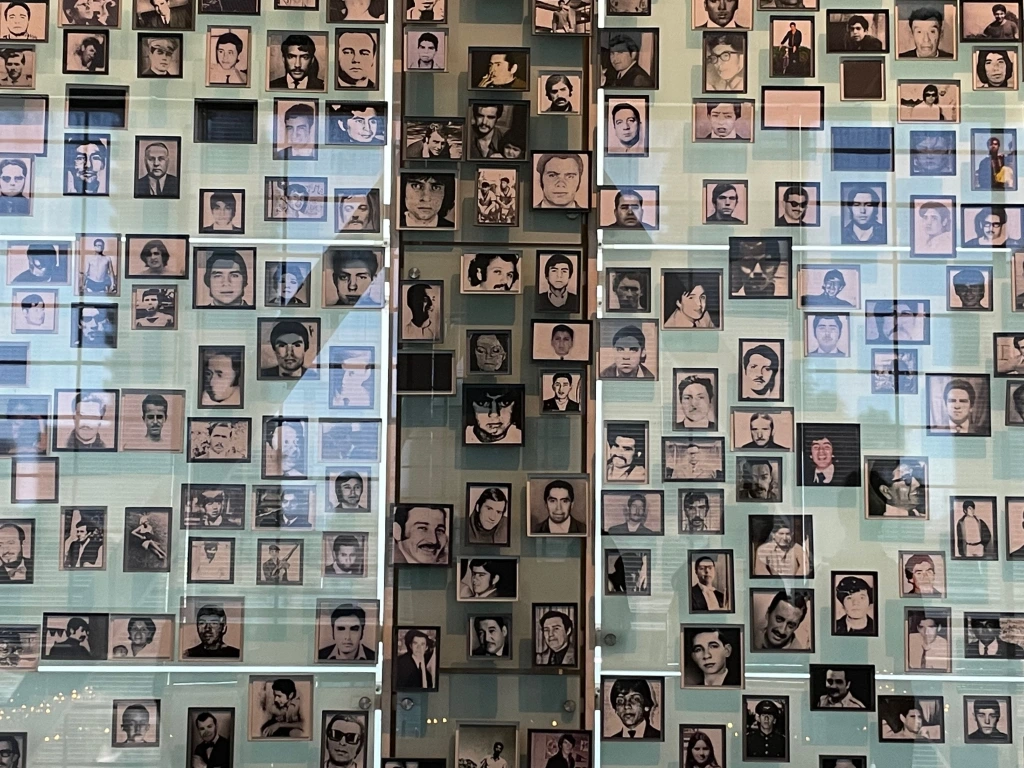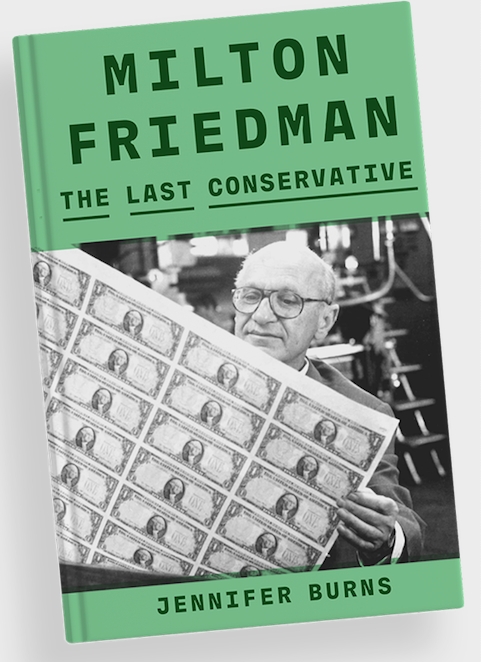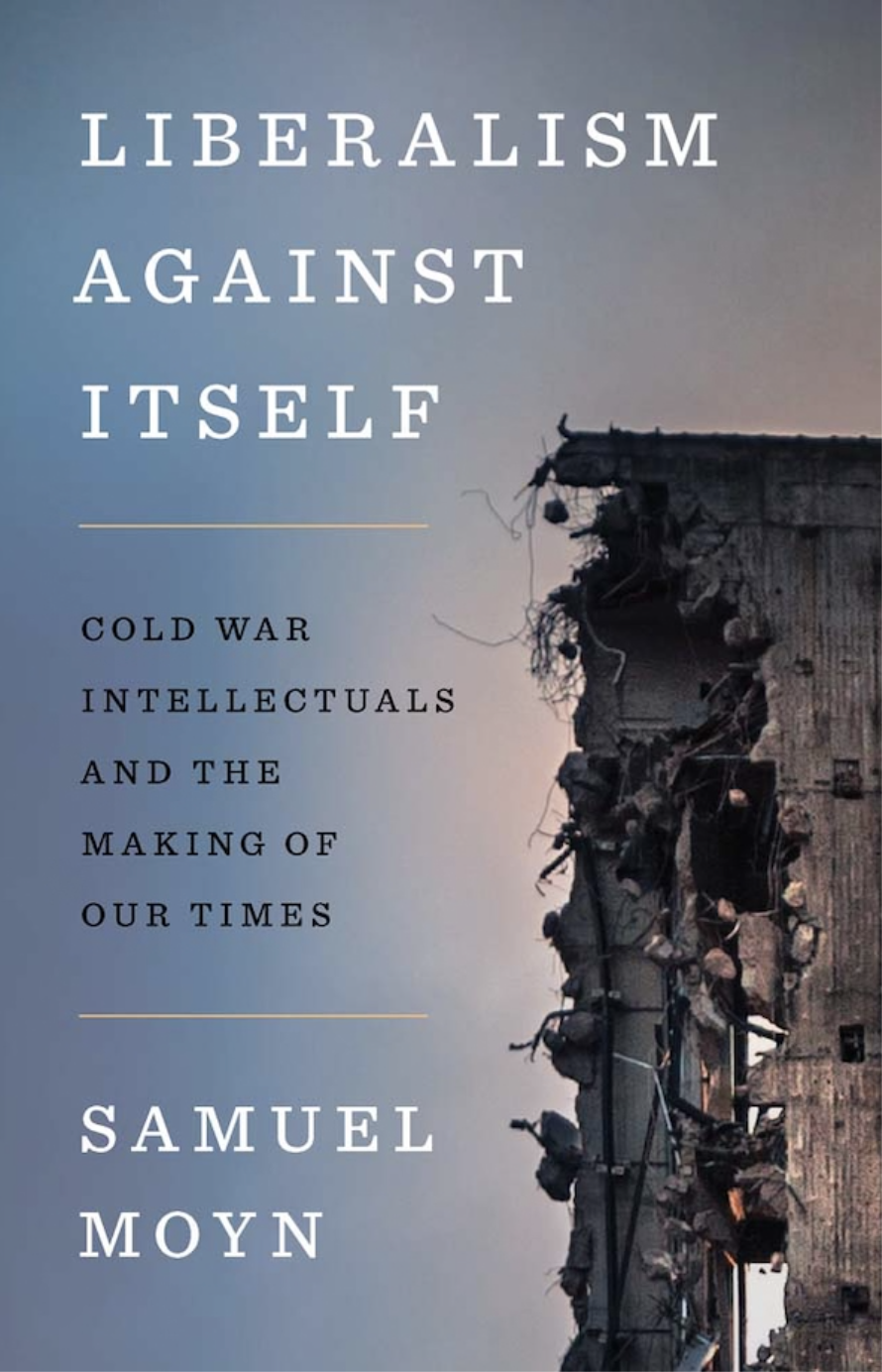History 242
University of Wisconsin, Madison
Modern Latin America
Professor Patrick Iber
Fall 2020 / MWF 9:55-10:45; online
Friday can be asynchronous
COURSE TEXT
Virginia Garrard, Peter Henderson and Bryan McCann, Latin America in the Modern World, (New York: Oxford University Press, 2019), ISBN 0199340226, $39.99. (Ebook available at $19.99.)
All other readings will be provided in PDF format.
The primary goals of this course are that students will be able to
- Describe the contours of Latin American history in the period since independence,
- Apply and use key concepts relevant to Latin American history, such as imperialism, inequality, populism, socialism, neoliberalism,
- Read for a dedicated purpose across different genres and forms of writing,
- Apply historical reasoning to understand the origins of present-day issues,
- Communicate effectively through presentations, discussion, and written work.
Class Format and Structure
This class takes place in its own moment in history: that marked by, among other things, the broad disruption to normal ways of living brought about by COVID-19. Given that reality, we can’t have a standard class. But we can still have an excellent one, and I have made every effort to think about how to provide you with the best possible experience under these conditions. It also means that I will be very flexible if, for whatever reason, you are unable to meet the standard expectations. If you are not able to do a given assignment, you can create an alternative, equivalent assignment. If you fall behind (because you fall sick, for example), you can catch up on your own schedule. THE MOST IMPORTANT THING THIS SEMESTER IS FOR YOU TO STAY HEALTHY, KEEP OTHERS HEALTHY, AND LEARN AS MUCH AS YOU CAN. Let us, as a class, keep the focus on what matters most.
Every week will have four elements:
GRADING INFORMATION
Grades are often thought of as a way of measuring the quality of student work, or even of the quality of the student themselves. But COVID-19 has made it especially clear that grades also depend on many extraneous factors outside of the student’s control. This has always been true, but is particularly clear now. Under these conditions, I have decided to participate in an experiment in partial un-grading. This is a practice that has been adopted by a small but growing number of instructors, frustrated that standard grading often works to inhibit learning rather than to spur it. To be clear: I believe in hard work, initiative, focus, drive, and practice. I also believe in creativity, exploration, and in the possibilities of diverse approaches to demonstrating mastery. The bottom line is that this semester you will compile a portfolio of your work from the semester, and then supply your own final grade by using a flowchart and a combination of assessment and self-assessment Though I reserve the right to challenge or change your grade, I don’t anticipate that this will be a common practice.
GRADING INFORMATION
Grades are often thought of as a way of measuring the quality of student work, or even of the quality of the student themselves. But COVID-19 has made it especially clear that grades also depend on many extraneous factors outside of the student’s control. This has always been true, but is particularly clear now. Under these conditions, I have decided to participate in an experiment in partial un-grading. This is a practice that has been adopted by a small but growing number of instructors, frustrated that standard grading often works to inhibit learning rather than to spur it. To be clear: I believe in hard work, initiative, focus, drive, and practice. I also believe in creativity, exploration, and in the possibilities of diverse approaches to demonstrating mastery. The bottom line is that this semester you will compile a portfolio of your work from the semester, and then supply your own final grade by using a flowchart and a combination of assessment and self-assessment. Though I reserve the right to challenge or change your grade, I don’t anticipate that this will be a common practice.
At the University of Wisconsin, I believe that letter grades should mean the following:
- A: indicates really superlative work. The student has not only mastered the material in the course at a high level, but has taken the initiative to go above and beyond course requirements.
- AB: indicates the student has mastered the material in the course at a high level. The student has done the reading and writing, participated actively in discussion and lecture, and can show that they have grasped the essential concepts and made an effort to improve and develop fundamental skills.
- B: indicates that the student has understood most of the course material. The student has done most of the reading and writing for the class, and participated in most discussions. The student can show that they engaged with the class thoughtfully, but may not have missed a few significant areas, because of time constraints or other reasons.
- BC: indicates that the student has understood some of the course material. The student has done some of the reading and writing, but the work may struggle to show to demonstrate learning and mastery.
- C: indicates that the student has been able to complete some of the course material, but can demonstrate only a modest amount of learning.
- D: indicates that the student has been able to complete only a portion of the course work, and therefore to demonstrate only minimal learning.
- F: indicates that the student has not been able to complete course work.
Guide to compiling your portfolio
The digital portfolio of your work this semester consists of:
- A cover page
- On a single page: a summary of your scores on the three quizzes. If you want to add any discussion of the results, you may do so.
- On a separate page: a summary of your participation in class and section. Please list all of the days of section that you attended, and all of them that you missed. If you missed any, explain why. Then describe your participation and participation in section. Did you do all of the reading? Did you contribute your ideas to the discussion? Did you learn from your peers? Were you respectful to others? This can be just a paragraph or two. You can discuss struggles, progress, moments of insight or helpfulness, and so on. After your last section meeting, email your TA with this description and a place yourself on the rubric found below. The TA can adjust this grade up or down if necessary.
- A revised version of the essay you chose, based on feedback from your instructors. Please also include the original version of the essay. Please include a one paragraph postscript describing what changes you made and how you incorporated feedback, and what you yourself noticed could be improved. A rubric is below.
- Copies of all of your forum posts, with a calculation of your forum grade, based on the rubric below. You don’t need to include your comments.
- On a separate page, a final self-evaluation. Include a calculation of your numerical grade. If you think that grade fairly reflects your learning this semester, you can leave it at that. If you want to make the case for a different letter grade, make the case, with evidence, as outlined below.
- If you’d like to provide evidence to support a higher grade than the number indicates, some suggestions are below.
To get a benchmark for your grade, this is where you should start.
Add up the percentage score for each of the three quizzes, your section participation, your forum participation, and your essay. The rubrics for scoring these are provided below. Once these are added up, divide by 6.
The number you get is your benchmark. It gets the conversation started. In general, these numbers can serve as a guide:
A: 94-100
AB: 88-93
B: 83-87
BC: 78-82
C: 70-77
D: 60-69
F: <60
Section participation rubric: Your attendance in section is critical to your learning this semester. You’ll have a chance to deepen your understanding of the class material, to ask questions, to discuss primacy documents, and to interact with your peers. This semester, it’s going to be especially important to maintain some community for learning. To get your section grade, this is what you need to do:
Give yourself the following points for attendance:
- 70 points for attending all sections, or missing one
- 60 points for missing 2-3 sections
- 50 points for missing 3-4 sections
- 40 points for missing 5-6 sections
- 30 points for missing more than 7 sections
Exception: if you need to miss more than one section due to illness or another emergency, you can excuse those absences in consultation with the TA or professor.
Thinking about your performance in section on the days you were there over the course of the semester, think about which of these best describes your participation? Active participation doesn’t necessarily mean that you need to talk every day, or that you will do better by dominating discussion. If you tend to talk a lot, strive to make room for your classmates. If you tend to be quiet, think about how you can find ways to make more active contributions.
- 30 points for coming to section with mastery of the readings; exploring questions rigorously; engaging with others respectfully, which means both listening respectfully and contributing your ideas
- 25 points for coming to section with strong command of the reading and participating frequently and considerately
- 20 points for coming to section with a partial command of the reading, contributing when called on
- 15 points for coming to section without incomplete command of the reading, and thus contributing relatively little to the discussion
- 10 points if you didn’t engage with section or were disruptive
Before the portfolio is due, email your self-reflection with a numerical grade to your TA for approval.
Forum participation rubric: there are 7 forum posts. Give yourself 12 points for each good quality post that represents a thoughtful effort to complete the assignment fully; fewer points if you didn’t complete the assignment as indicated (or was late without an important reason). Give yourself 3 points for each week where you made a comment on another person’s post that added to the conversation. Your comments should go beyond “nice post” and they should be constructive rather than critical: asking questions and adding insights from your own studies. 7 posts plus 5 comments will equal 99 points. Don’t give yourself a score over 100.
Essay rubric:
You get points for your first draft, and for your revisions.
- 70 points for a solid, serious first draft (as indicated on the rubric). It doesn’t have to be perfect
- 60 points for a solid but late draft, or a draft that doesn’t meet several of the goals of the assignment
- 50 points for an essay with serious problems
- 40 points if you don’t turn in your essay
| Argument | Evidence | Structure | Technique | |
| Polished | The argument is clearly stated and is reasonable and thoughtful | The evidence skillfully draws from sources. Quotations support the argument and sources are identified | The structure of the essay, with introduction and conclusion, leads the reader to be convinced of the argument | The essay reads easily, with good sentence structure, and word choice |
| Some room for improvement | The main argument is identifiable, thought it could be more clearly stated or is only partially true | The evidence presented supports the argument but there may not be enough of it or the sources may not be varied enough or clearly identified | Parts of the essay are well-organized, but the body may seem out of order, or it may not flow logically | Some sentences are confusing, but overall the writing is clear |
| Needs major work | The argument is unclear, unstated, or unreasonable | The evidence doesn’t support the argument, or doesn’t draw from sources | The organization of the essay is confusing for the reader | The writing has problems that make it hard for the reader to follow |
In addition to that, you’ll get points for revising your essay in response to feedback.
- 20 points for addressing all of the comments of your grader
- 15 points for addressing most of the comments of your grader
- 10 points for addressing some of the comments of your grader
Add a final 10 points for doing your self-reflection as part of your portfolio page about the essay.
Now you have six scores. Once you’ve computed the average, you have a place to begin. If you feel that the number you get does not fairly represent the work you’ve done in class, you can make a case in your portfolio for a different grade. Did you do extra work that isn’t captured in the numerical score? Did you face unusual challenges this semester, causing your grade to suffer in one area, but can demonstrate that you mastered the material in another way? To make the case, you can’t just assert it: you have to include that evidence and convince us. If you experienced extraordinary or extenuating circumstances this semester, feel free to discuss them. I know you’re dealing with a lot. Nevertheless, remember that the letter grade reflects your learning in this class in this semester, so hardship doesn’t automatically mean that it’s appropriate for you to give yourself a grade that you didn’t earn. It does mean that we are unusually flexible. Bottom line: if you accept the grade that corresponds to the numerical score, the grading is straightforward. But the numerical grade is not the final word. It is possible to adjust, with greater adjustments requiring greater justification.
Let’s say that you’ve done well and have a numerical average of 89, but you’d like an A for the class. Show that you’ve done some extra learning! You could read a book about something related to the course that interests you, and write a short paper about it that you include in your portfolio. Or you could do a volunteer project, or make a web site, or do an art or music project. Of course, these would have to be related to the themes of the class, but you have a lot of flexibility. Feel free to bounce ideas off of your instructors.
COURSE PLAN
Monday, January 25: Introduction to the course
Wednesday, January 27: The Colonial Heritage
Prologue to Latin America in the Modern World, xxxv-lv
Friday, January 29: Forum post #1: Latin America Today
This week, I want you to find a news source about something happening in Latin America today. This should be a substantial article, not a news brief. You can find excellent reporting in U.S. newspapers, like the New York Times, or in U.K. newspapers, like The Guardian. Or you can find analysis in many magazines. Or, if your language skills are sufficient, you can read something in something like the Spanish newspaper El País, or in newspapers or magazines from Latin America.
Summarize what you the article describes, and what it reveals about what are major issues affecting the lives of people living in Latin America today. What questions does it leave you with?
February 1, Independence Struggles I
Latin America in the Modern World, Chapter 1, “Latin America in the Age of Atlantic Revolution, 1789-1820s,” 2-53.
February 3, Independence Struggles II
Pamela Murray, For Glory and Bolívar: The Remarkable Life of Manuela Sáenz, University of Texas Press, 2008, chapters 2 and 3, pp. 27-82.
February 5, Forum post #2: Independence and National Identity
Use https://artsandculture.google.com to search for a country in Latin America by name. You’ll find exhibitions at national museums of arts and culture. For now, please focus on material from the 19th century and earlier. (Put aside the 20th century for now. Please don’t use the work of one of the major Mexican visual artists of the Revolution (Diego Rivera, Frida Kahlo, Siqueiros or Orozco) because we’ll all be taking a look at their work in a couple of weeks.)
Examine what you find. Tell us what country you picked, of course, and about what you found. Some questions that you might want to consider include: What sort of objects have been included to create a story of the nation and a national past? How are the objects presented? What is deemed important? Who was painted? How were they represented? All in all, what can we learn from these collections? You may want to take a screenshot of a particularly interesting object or two and include it in your post.
Week 3: Nineteenth Century II
Monday, February 8: Challenges of Independent States I
Latin America in the Modern World, Chapter 4, “Progress and Modernization: The Elite’s Strategy, 1870-1929,” 188-237.
Wednesday, February 10: Challenges of Independent States II
Erika Pani, “Law, Allegiance, and Sovereignty in Civil War Mexico, 1857-1867,” Journal of the Civil War Era, 7, no. 4 (December 2017): 570-596.
Friday, February 12: Forum post #3:
This week, I want you to explore the relationship between economy and geography. Pick a Latin American country. Research its major exports and its geographic features. Is there a relationship that you can see between them? What natural endowments helped shape its economic place in the world? Make sure to check out the posts of your classmates also, to learn more about countries you didn’t choose to research.
This might be a good week to make sure you can identify the countries and major cities and geographic features of Latin America, for the upcoming quiz.
Week 4: The Mexican Revolution
Monday, February 15, Mexican Revolution I
Latin America in the Modern World, Chapter 7, “Progress and its Discontents, 1880-1920,” 286-333.
Wednesday, February 17, Mexican Revolution II
Watch: “The Storm that Swept Mexico,” (just the first hour is OK): https://www.youtube.com/watch?v=pVWcgOcvgV0&t=5609s
Friday, February 19: Forum post #4: Arts & the Mexican Revolution
Please watch just a fragment of the second part of the “Storm that Swept Mexico” documentary (or more if you like of course, but the most relevant part is hour 1:33-1:44).
I want you to explore the work of one of the great visual artists of the Mexican Revolution: Diego Rivera, Frida Kahlo, David Álfaro Siqueiros, or José Clemente Orozco. You can find online exhibitions and galleries from museums containing their work at https://artsandculture.google.com by searching for their names. What themes do they paint? How and where did they paint? In what ways were their lives connected to their artistic projects? In what ways were their artistic projects connected to historical changes that they lived through. You can focus on a particularly compelling work if you like. Include a screenshot and your interpretation of the artwork.
Week 5: Latin America in the World System
February 22, Neocolonialism
Latin America in the Modern World, “Latin America in an Imperial Age,” 238-285
Watch: Dee Dee Halleck’s film The Gringo in Mañanaland
Halleck’s film takes clips from newsreels and Hollywood films to show how Latin America was depicted and portrayed—try to think about the relationship of these images to neocolonialism. You can get the idea from the first 15 minutes of the film; you might want to scan a bit after that for sections that interest you.
February 24, The Great Depression
Latin America in the Modern World, parts of chapter 8, 338-361
Angela Vergara, “Chilean Workers and the Great Depression, 1930-1938,” pp. 51-80 in Paulo Drinot and Alan Knight (eds.), The Great Depression in Latin America.
February 26: Quiz #1 (includes map questions)
Week 6: The Cold War
March 1, From World War II to the Cold War: Argentina
Latin America in the Modern World, parts of Chapter 8, 9, 10, “The Great Depression and Authoritarian Populists,” 362-378, 416-428, 432-446.
March 3, From World War II to the Cold War: Guatemala
Stephen Kinzer, chapter on Guatemala from Overthrow, pp. 129-147.
March 5, Work on Essay
There is no forum post this week. You should work on your essay, which will be due next Friday. Extra professor office hours will be held during the normal class time.
Week 7: The Cuban Revolution
March 8, The Origins of the Cuban Revolution
Latin America in the Modern World, part of Chapter 10, part of “Revolution and Reform in Latin America,” 447-456.
Watch: Fidel Castro, first hour, https://www.youtube.com/watch?v=9GPReixtd64
March 10, The Fate of the Cuban Revolution
Deborah Shnookal, chapter on the literacy campaign from Operation Pedro Pan and the Exodus of Cuba’s Children, pp. 63-104.
Listen: audio documentary, Elizabeth Dore, “Cuban Voices,” https://www.bbc.co.uk/sounds/play/p06xfy81
March 12, Essay is Due
This Friday you will be submitting an essay of 1000-1250 words. Your essay should draw from course materials to present an answer to one of the questions provided. You will submit this essay to be read by your instructors, who will provide feedback. You will work on improving your essay, and include both versions in your final portfolio, along with a paragraph discussing what you did to improve the essay.
Week 8: Socialism(s)
March 15, Guerrilla Struggle
Latin America in the Modern World, parts of Chapters 10 and 11, part of “Revolution and Reform in Latin America,” 461-500.
Jon Lee Anderson on Che, https://www.thenation.com/article/che-guevara-lessons-from-a-revolutionary-life/
Alma Guillermoprieto, “The Harsh Angel,” from Looking for History, 73-86
March 17, Allende’s Chile
Peter Winn, “The Furies of the Andes,” from A Century of Revolution, pp. 239-275.
Listen to podcast: 99% Invisible on “Project Cybersyn,” https://99percentinvisible.org/episode/project-cybersyn/
March 19: Forum post #5: Was a democratic socialism possible?
Choose one of the three parts of Patricio Guzmán’s epic documentary, “La Batalla de Chile.” Each is about an hour and a half long, and covers a different aspects of the experience of Chile under Allende. Guzmán, who sympathized with the socialist project, thought he was going to document Chile’s transformation. Instead, he ended up documenting polarization, collapse, and the eventual coup d’état.
For this week, pick one of the parts of the documentary
Part 1: The Insurrection of the Bourgeoisie
Part 2: The Coup d’état
Part 3: Popular Power
Or watch “Chile, Obstinate Memory,” a 1997 follow-up in which the filmmaker shows his 19702 movie to Chileans who have never seen it before.
While you watch, the question I want you to ask yourself is whether Chile’s socialist project could have survived. If so, how? With what support? With what changes? If not, why not? What made its fall likely, if not inevitable? Use what you see in the film as evidence. What sequences and information caused you to come to your conclusion?
Mix it up (politely, respectfully) in the discussion board! It’s a hard question to answer.
Week 9: Dictatorship and Democracy
March 22: Pinochet’s Chile
Latin America in the Modern World, part of Chapter 11, “Counterrevolution in Latin America, 1960-1980,” 501-526.
Watch: “The Chicago Boys,” first half: http://www.gamba.cl/2018/05/chicago-boys-vean-aca-el-documental-que-tvn-emitio-a-la-hora-de-la-corneta/
March 24: Transitions to Democracy
Latin America in the Modern World, part of Chapter 13, “Neoliberalism and its Discontents, 1980-2015,” 578-600.
Watch: “The Chicago Boys,” second half: http://www.gamba.cl/2018/05/chicago-boys-vean-aca-el-documental-que-tvn-emitio-a-la-hora-de-la-corneta/
March 26, Quiz #2
Week 10: The Late Cold War: Central America
March 29, The Wars
Latin America in the Modern World, Chapter 12, “The Late Cold War in Latin America, 1970s-1990,” 532-577.
March 31, The Peace
Nobel Prize speech of Óscar Arias of Costa Rica, 1987
https://www.nobelprize.org/prizes/peace/1987/arias/acceptance-speech/
Nobel Peace speech of Guatemalan indigenous activist Rigoberta Menchú Tum, 1992:
https://www.nobelprize.org/prizes/peace/1992/tum/lecture/
The Rigoberta Menchú controversy, 1998:
Óscar Arias looks back on the peace accords:
The Óscar Arias controversy, 2019:
April 2, NO CLASSES, UNIVERSITY HOLIDAY
Week 11: Neoliberalism
April 5, The Washington Consensus
Latin America in the Modern World, part of Chapter 13, “Neoliberalism and its Discontents, 1980-2015,” 597-626.
Primary document: Mario Vargas Llosa, “Towards a Totalitarian Peru,” 1987, https://www.crisismagazine.com/1987/documentation-toward-a-totalitarian-peru
April 7, Mexico’s Transition to Democracy
Latin America in the Modern World; 601-626.
Read: Guillermoprieto, “Letter from Mexico City,” New Yorker, September 17, 1990
April 9, Forum post #6: Films and contemporary Latin America
This week, I would like you to watch a film about relatively contemporary Latin American reality, made by a filmmaker from Latin America. My recommendations are Amores Perros (Mexico), Roma (Mexico), La ley de Herodes (Mexico), The Milk of Sorrow (Peru), City of God (Brazil), Fresa y Chocolate (Cuba), Machuca (Chile), The Official Story (Argentina), The Secret in Their Eyes (Argentina), but if there’s another you’re interested in, feel free to clear it with us. In your post, tell us about the movie and how it reflected a moment or issue in time. What did it try to tell its viewers? How did it do so?
Week 12: The Pink Tide
April 12: 21st Century Socialism
Latin America in the Modern World, 629-675.
April 14: 21st Century Social Democracy
Perspectives on Uruguay:
Eve Fairbanks, https://newrepublic.com/article/120912/uruguays-jose-mujica-was-liberals-dream-too-good-be-true
Gerardo Caetano, https://www.dissentmagazine.org/article/uruguay-the-end-of-the-dream
Nicolas Saldias, https://theglobalamericans.org/2019/12/the-broad-fronts-legacy-failure-to-reform-uruguays-educational-system/
April 16, Forum post #7
This week, I’d like you to watch Petra Costa, recent documentary “The Edge of Democracy.” It’s available on Netflix (to which most of you have access) and on Kanopy, which you should all have access to by virtue of being a UW student. The award-winning documentary explores the conditions leading to the fall of the Workers’ Party (PT) in Brazil. Write about your reaction to the film. What were the challenges facing the governments of the PT? How well did they navigate them? How would you explain the rise of the right in reaction?
Week 13: Drugs and Violence
April 19: Colombia and Mexico
Guillermoprieto, Looking for History, “Our New War in Colombia,” 19-39
Ev Meade, introduction to The Taken: True Stories of the Sinaloa Drug War, pp. 1-52
April 21: The United States
Sam Quiñones, Dreamland, pp. 256-300
April 23, Quiz #3
Week 14: The Future of Latin America
April 26, Migration
Francisco Cantú, The Line Becomes a River, part 3.
April 28, Environment
Paul A. Colinvaux, “The Past and Future Amazon,” Scientific American 260, no. 5 (May 1989): 102-109.
Ignacio Amigo, “When will the Amazon hit a tipping point?” Nature, 25 February 2020,
https://www.nature.com/articles/d41586-020-00508-4
April 30, Compile your portfolios
There are no additional assignments this week: work on compiling your portfolio, as laid out in the syllabus.





Leave a comment